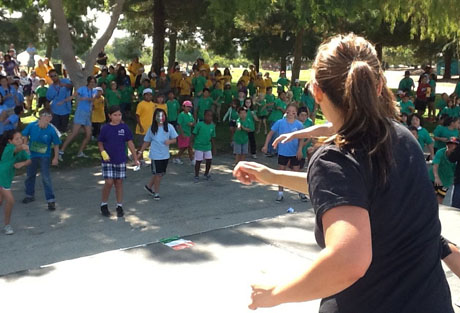The neighborhood park is often taken for granted as part of the everyday American urban and suburban landscape. Even regional parks are often given little notice beyond the basic appreciation that they are there. Much of this is due to the priority that cities have put on parks.
Our parks, historically, have been taken care of by a city department, which employs a wide variety of people to act as our cultural and environmental custodians. These departments include: landscape designers, landscape maintenance professionals, arborists, rangers, recreation specialists, park supervisors, and a myriad of others who help keep them clean, safe and beautiful.
In the 21st Century, we find ourselves strapped for funds to maintain what our predecessors have created and yet the need is still as great as ever. The value of parks and trails has not been diminished, even though our budgets have. When I said that “parks are for people,” I meant that parks serve the citizenry in a unique way, unlike any other civic institutions or cultural amenities.
The primary value of our parks is economic. The land on which we have constructed a park or dedicated a trail or open space is a statement of belief in ourselves. We are acting for the common good. Studies show that cities with good parks systems are economically strong municipalities. This is the macro effect of our parks.
There are many reasons for this, but it is somewhat self-evident that a city that provides amenities such as parks and trails is more likely to attract a more dedicated citizenry that is more creative and more committed to a healthy economy. The workforce of a city is often drawn by the pleasant and healthy surroundings that parks offer.
Another value is community health, including the collective health of individuals. A recent study showed that the health of teenagers, especially girls, is influenced by their proximity to parks and playgrounds. Beyond this study are many others that demonstrate a direct correlation between parks and better health for citizens of all ages.
From a study conducted by the City Parks Alliance, a national nonprofit organization dedicated to the well being of urban and suburban parks everywhere: “If you want to stay heart healthy, then communing with nature at your local park is a good first step. People living near parks have greater opportunities to be physically active by running, walking or participating in other heart happy activities. In fact, studies show that adopting an active lifestyle reduces stress and obesity, and may even lower the risks of heart disease and diabetes.”
The obesity crisis that overwhelms many young people heavily impacts low-income youth. Accessible parks and trails that are open to everyone create a practical way to combat this unfortunate epidemic. This is part of the impetus behind the creation of our program KIDS@PLAY, which encourages exercise in parks and on trails, combined with a healthy diet.
James P. Reber is the Executive Director of San Jose Parks Foundation, a veteran nonprofit entrepreneur and experienced special event planner and producer. He can be reached at http://www.sanjoseparks.org /
ja***@sa**********.org
/ 408.893.PARK.

